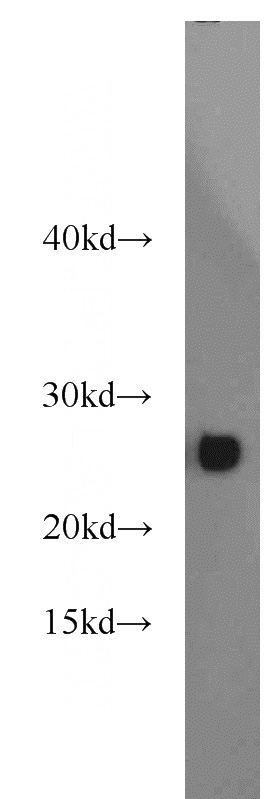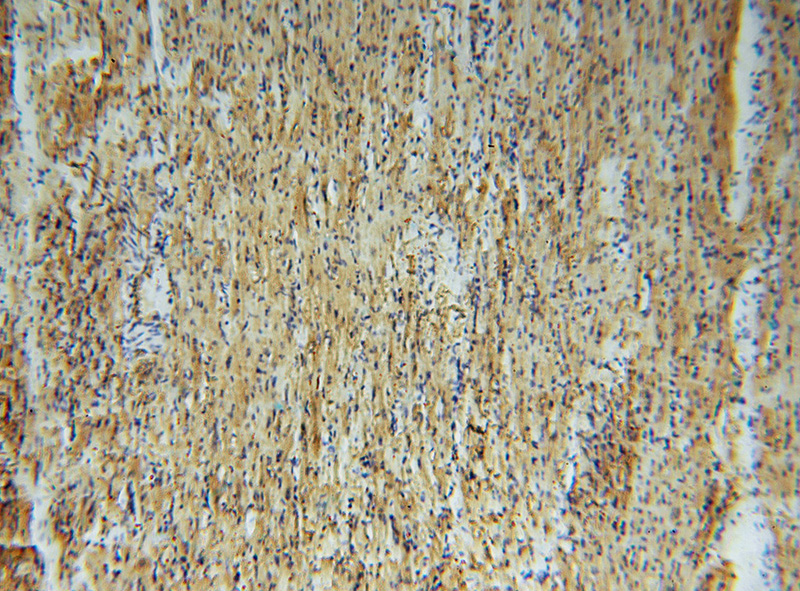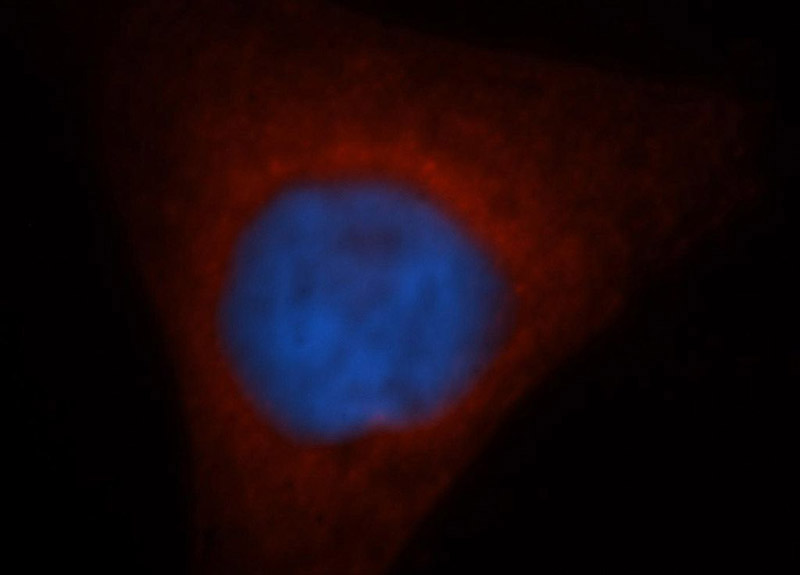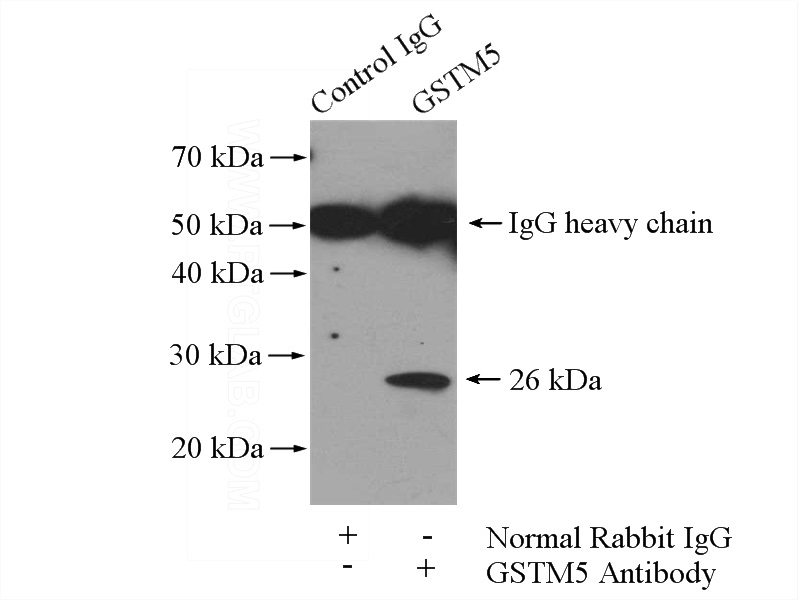-
Product Name
GSTM5 antibody
- Documents
-
Description
GSTM5 Rabbit Polyclonal antibody. Positive WB detected in mouse testis tissue, HeLa cells, mouse skeletal muscle tissue, rat skeletal muscle tissue. Positive IP detected in mouse skeletal muscle tissue. Positive IF detected in HepG2 cells. Positive IHC detected in human heart tissue. Observed molecular weight by Western-blot: 26kd
-
Tested applications
ELISA, WB, IHC, IF, IP
-
Species reactivity
Human,Mouse,Rat; other species not tested.
-
Alternative names
glutathione S transferase mu 5 antibody; GST class mu 5 antibody; GSTM5 antibody; GSTM5 5 antibody; GTM5 antibody
-
Isotype
Rabbit IgG
-
Preparation
This antibody was obtained by immunization of GSTM5 recombinant protein (Accession Number: NM_000851). Purification method: Antigen affinity purified.
-
Clonality
Polyclonal
-
Formulation
PBS with 0.02% sodium azide and 50% glycerol pH 7.3.
-
Storage instructions
Store at -20℃. DO NOT ALIQUOT
-
Applications
Recommended Dilution:
WB: 1:200-1:2000
IP: 1:200-1:2000
IHC: 1:20-1:200
IF: 1:20-1:200
-
Validations

mouse testis tissue were subjected to SDS PAGE followed by western blot with Catalog No:111188(GSTM5 antibody) at dilution of 1:1000

Immunohistochemical of paraffin-embedded human heart using Catalog No:111188(GSTM5 antibody) at dilution of 1:50 (under 10x lens)

Immunohistochemical of paraffin-embedded human heart using Catalog No:111188(GSTM5 antibody) at dilution of 1:50 (under 40x lens)

Immunofluorescent analysis of HepG2 cells, using GSTM5 antibody Catalog No:111188 at 1:50 dilution and Rhodamine-labeled goat anti-rabbit IgG (red). Blue pseudocolor = DAPI (fluorescent DNA dye).

IP Result of anti-GSTM5 (IP:Catalog No:111188, 4ug; Detection:Catalog No:111188 1:600) with mouse skeletal muscle tissue lysate 4000ug.
-
Background
GSTM5 belongs to the GST superfamily that metabolizes a broad range of xenobiotics and carcinogens. GSTM5 is expressed in brain, testis, lung and a lesser extent in heart. No expression was detected in liver tissue.
-
References
- Ijiri TW, Vadnais ML, Huang AP. Thiol changes during epididymal maturation: a link to flagellar angulation in mouse spermatozoa? Andrology. 2(1):65-75. 2014.
- Nakajima T, Hata R, Kondo T, Takenaka S. Proteomic analysis of the hippocampus in naïve and ischemic-preconditioned rat. Journal of the neurological sciences. 358(1-2):158-71. 2015.
Related Products / Services
Please note: All products are "FOR RESEARCH USE ONLY AND ARE NOT INTENDED FOR DIAGNOSTIC OR THERAPEUTIC USE"
